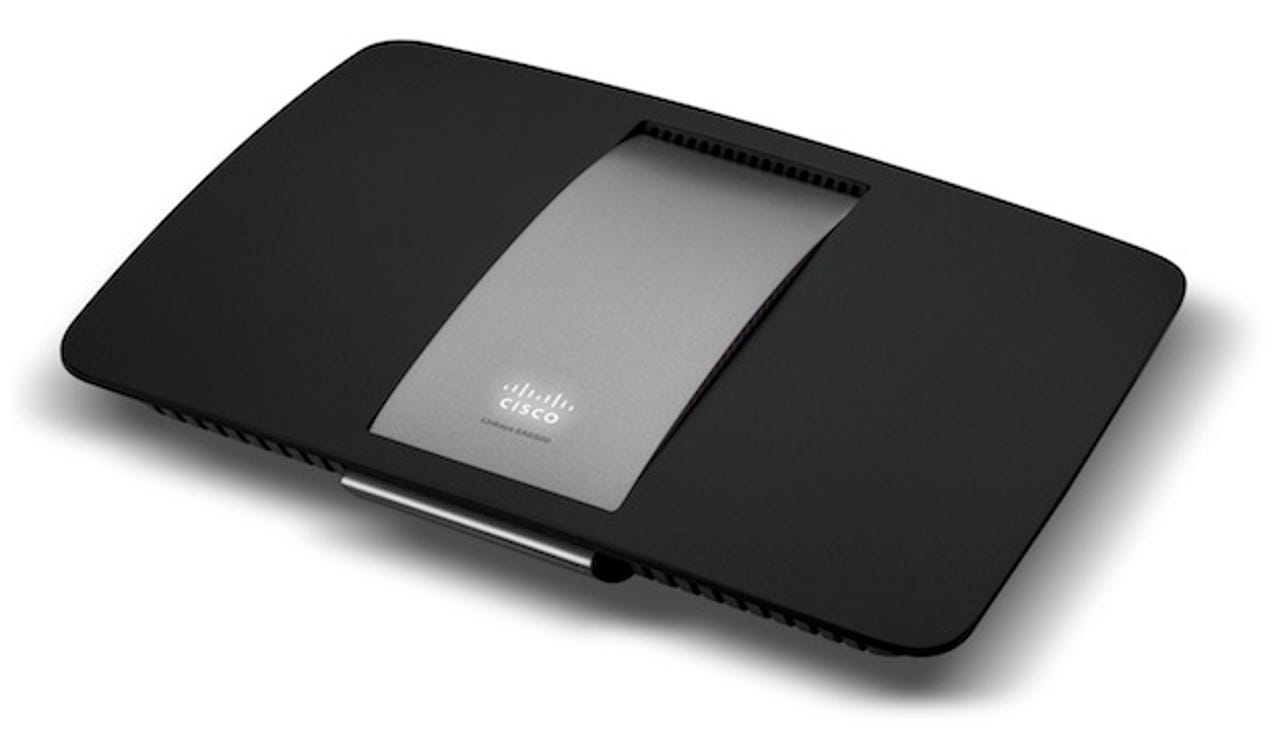Roundup: high-speed 802.11ac Wi-Fi routers

The first 802.11ac router, based on Draft 2.0 silicon from Broadcom, appeared in the first quarter of 2012, and it's taken a while for other vendors to release their first products. The ratification process is now up to Draft 4.0, but final approval is still some way off. However, vendors seem confident that no major bombshells will be dropped and that any minor tweaks in the final standard will be addressable by firmware upgrades. Here's a quick overview of three recent launches, all designed for cable/BT Infinity broadband services and based on the same Broadcom BCM4360 chip.
Cisco Linksys EA6500

Using similar design cues to the 802.11n EA4500 model, the EA6500 also uses the controversial new Cisco Connect Cloud platform, a web-based interface that gives developers access to many of the router's features and settings. However, there seems to have been little take-up of this technology, with only a handful of free or paid-for third-party apps available.
Cisco offers a matching 4-port Gigabit Ethernet bridge, the WUMC710, rather than a USB adapter. This costs US$149.99, or around £90 (inc. VAT) and is much more compact (and cheaper) than the Buffalo bridge we looked at.
The EA6500 is a 3-stream device, giving theoretical link speeds up to 1,300Mbps in 5GHz 802.11ac mode. It also has a 450Mbps 2.4GHz 11n radio. Performance at close range in 802.11ac mode (using the WUMC710) was very impressive at 180Mbps — much better than we saw from the Buffalo Airstation 1750. At 25m range, throughput dropped to about 45Mbps. Performance was distinctly average in 802.11n mode in a noisy domestic environment: 35Mbps at close range on the 2.4GHz channel and 47Mbps at 5GHz.
Other features of the EA6500 include a Simple Tap NFC card that can be used to configure NFC-enabled devices, and twin USB 2.0 ports for printer and storage sharing. No ADSL version is available at the moment. The EA650 costs US$199.99, or £155 (inc. VAT). A single guest network is supported on the 2.4GHz channel.
D-Link DIR-865L
D-Link's DIR-865L is a rather ungainly device, but with street prices from around US$169, or £125 (inc. VAT), it's also one of the cheapest 802.11ac routers.
The DIR-865L uses D-Link's standard text-based web interface, with plenty of advanced options available including configurable QoS settings. Like the other routers covered here, it also has a configurable setting for 20/40MHz channel coexistence. This can be used to force the router to use 40MHz channels in 802.11n mode even if other 11n networks are detected — by default, Wi-Fi certification requires fallback to 20MHz in these circumstances, as part of the 'good neighbour' policy. The router also supports dual guest networks.
For client connectivity, D-Link offers a USB adapter, the DWA-182 (from US$65, or £50 inc. VAT), which is a 2-stream (867Mbps) device. The DIR-865L is a 3-stream (1,300Mbps) model. We ran some performance tests using both this and the Cisco Linksys WUMC710 bridge, and results were poor in both cases. In 802.11ac mode it struggled to reach 60Mbps at close range, although at 25m it did manage to sustain around 38Mbps.
Netgear R6300
Netgear's R6300 is a huge slab-shaped 3-stream router that uses the latest version of the Genie graphical web interface, along with an unusual and very useful desktop utility that gives quick access to the main settings. Printers and storage are shared via the two USB 2.0 ports, and unusually it also supports Apple's AirPrint feature for printing from iOS devices.
The router has a special bridge mode setting that turns it into a powerful, albeit expensive, client adapter. Netgear supplied us with two routers, one of which we used in this mode for our tests. We also tried the new A6200 2-stream USB adapter (from around US$65, or £49 inc. VAT), which is a very odd-looking device with a rotating antenna section.
Using the bridge, 802.11ac performance was outstanding. At 1m it equalled the 180Mbps of the Linksys EA6500, but at 25m it was much faster at 100Mbps — the best result we've ever seen at this range. With the AC6200 adapter, performance was nowhere near as good, managing 63Mbps at close range and 43Mbps at 25m.
The R6300, which costs from US$187, or £151 (inc. VAT), is highly configurable and probably the most amenable to business use of the three products here. Like the D-Link DIR-865L, it supports simultaneous guest networks on each radio channel.